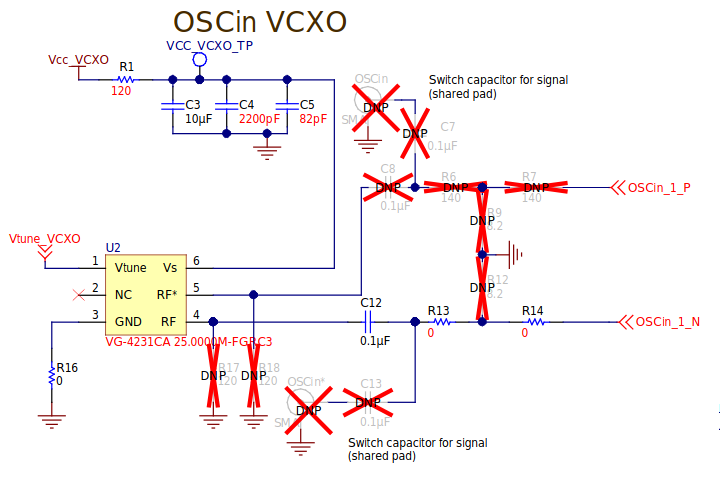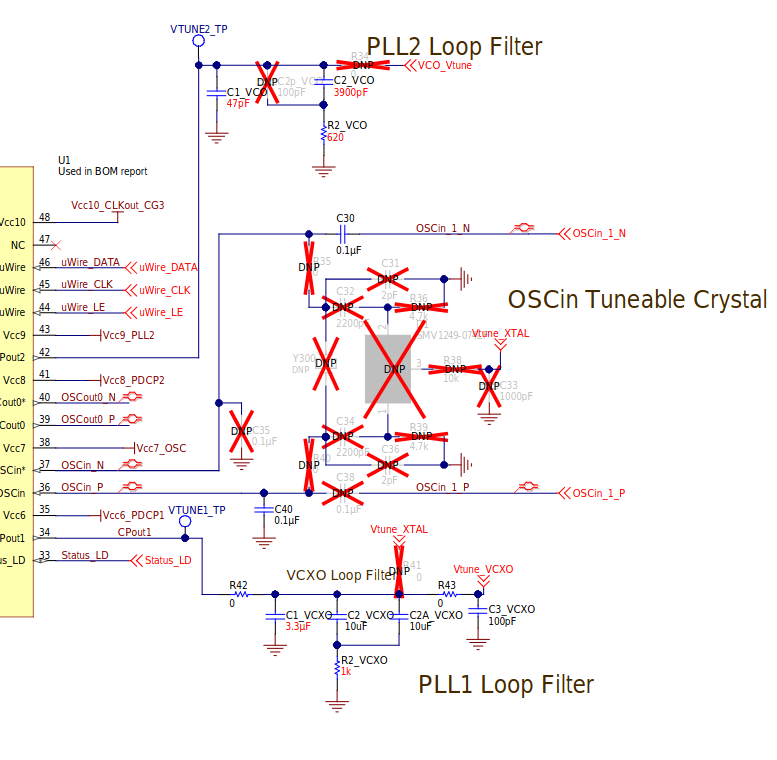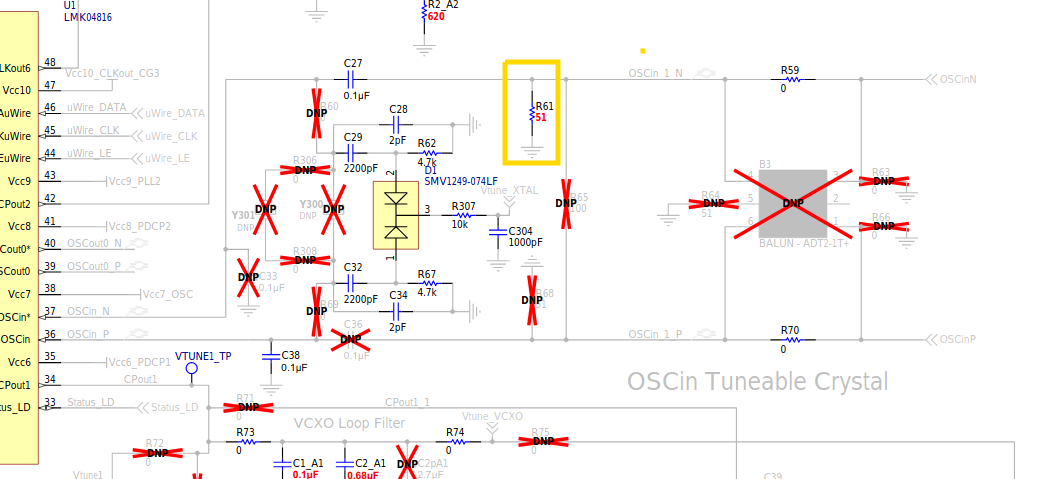Other Parts Discussed in Thread: LMK04906, LMK04816BEVAL
Hi,
We noticed in the schematics of the LMK04906BEVAL that the 3.3V LVCMOS reference crystal oscillator (U2) is coupled using a 0.1uF dc-blocking capacitor into one of the OSCin inputs (the other OSCin input being connected to ground also using a 0.1uF capacitor).
In my eyes this violates the maximum input voltage on the OSCin pins as given in the datasheet (page 7) V_OSCin: 0.2 to 2.4 Vpp. Can you clarify?
We need to know how we can connect our 3.3V LVCMOS oscillator to the OSCin pin and whether we need to use some kind of signal attenuation.
Best Regards and Thanks!






